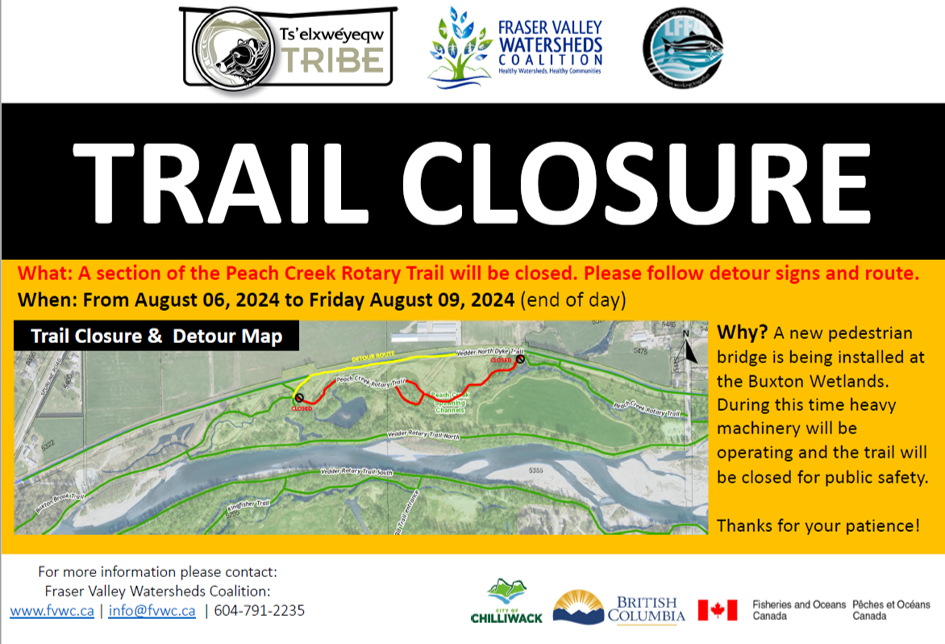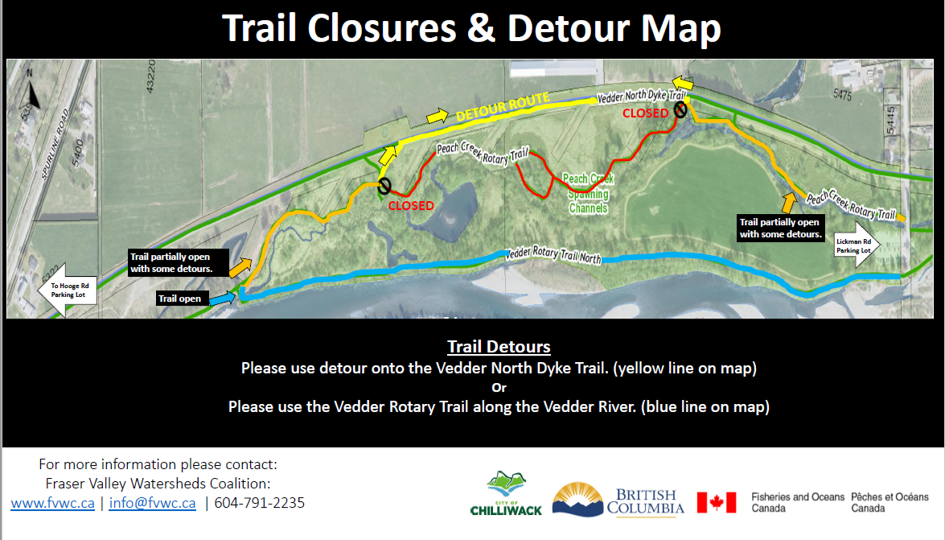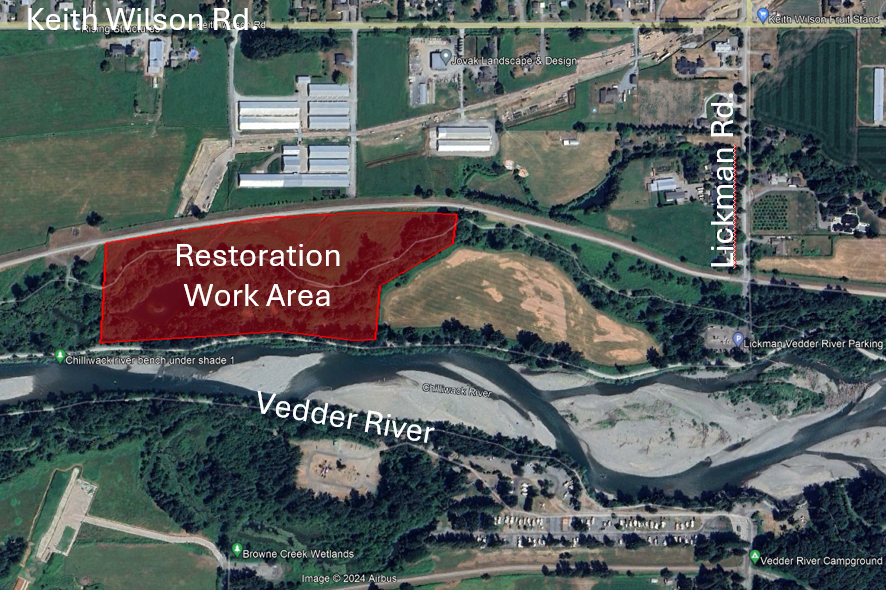

LEAD & PARTNERS
This project is lead by Ts’elxwéyeqw Tribe Governing Council. They are supported by Fraser Valley Watersheds Coalition; Province of BC Water, Land, and Resource Stewardship; DFO Centre for Salmon Habitat Expertise; Lower Fraser Fisheries Alliance; Semá:th First Nation; City of Chilliwack; Community supporters and volunteers.
BACKGROUND
This project will transform an area dominated by invasive plants, mainly reed canary grass and Himalayan blackberry, into an off-channel wetland connecting to Peach Creek (and eventually Vedder River) that will support healthy floodplains and habitat for local fish and wildlife species. Restoring this area will enhance culturally significant area for the Ts’elxwéyeqw Tribe and reconnect people to nature. By maintaining and caring for the natural resources in this watershed we are supporting healthy salmon populations, providing resilient riparian and biodiversity values and improving ecosystem processes for generations to come.
PURPOSE
This project is an Indigenous lead, collaborative effort, to restore salmon habitat along the Vedder River (Ts’elxwéyeqw) respecting and applying traditional ecological knowledge and scientific knowledge (2 -eyed seeing). Through this project enhancements of the floodplain ecology will occur that will promote conservation and community values.
WHAT
Through this project, we will increase (restore) the amount of available off-channel habitat to support Indigenous salmon and wildlife species in this urban area. This new wetland is anticipated to be over 2,000m2 in size (just larger than one hockey rink). It will be hand replanted with thousands of Indigenous trees and shrubs.
BENEFITS
HOW
Construction of this wetland will require the use of heavy machinery such as excavators and dump trucks that will dig the new wetlands and install rootwads and stones to complex the habitat. In the fall, Indigenous trees and shrubs will be hand planted by Ts’elxwéyeqw Tribe, Guardians, FVWC and community volunteers.
For your safety, please obey trail closures and posted safety signs.
WHEN
WHERE

